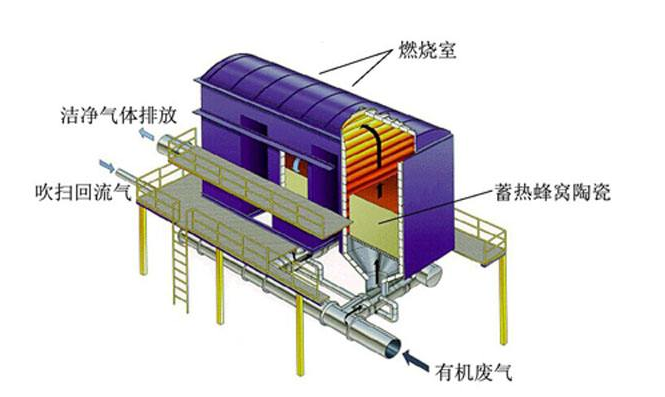(a) Preprocessing
1. When the exhaust gas contains acid and alkali gases, it is advisable to use processes such as neutralization and absorption for pretreatment; when the particulate matter content in the exhaust gas is higher than 10mg/m3, it should be pretreated by means of filtration, washing, electrostatic capture, etc. deal with;
2. Differential pressure gauges should be installed at both ends of the filter device. When the resistance of the filter exceeds the specified value, the filter material should be cleaned or replaced in time.
(b) Combustion chamber
1. The residence time of exhaust gas in the combustion chamber should generally not be less than 0.75 s;
2. The combustion temperature of the combustion chamber should generally be higher than 760 ℃.
(c) Regenerator
1. The cross-sectional wind speed should not be greater than 2 m/s;
2. When the waste gas contains silicone, protective measures should be taken for the regenerator to avoid or slow down the blockage and performance decline of the regenerator.
(d) Burner
1. The auxiliary fuel should preferably be natural gas, liquefied petroleum gas and other fuels; the burner should have the function of automatic temperature adjustment, and should meet the requirements of "General Technical Conditions for Industrial Fuel Gas Burners" (GB/T 19839-2005);
2. Low nitrogen burners are preferred.
(e) Overall requirements of the process system
1. The reversing time of the reversing valve of the stationary regenerative combustion device should be 60-180 s, and the reversing time of the gas distributor of the rotary regenerative combustion device should be 30-120 s;
2. The gas temperature difference between the inlet and outlet of the regenerative combustion device should not be greater than 60℃;
3. The regenerative combustion device should be thermally insulated as a whole, and the outer surface temperature should not be higher than 60°C, except for some hot spots;
4. When the ambient temperature is low or the humidity of the exhaust gas is high, anti-condensation measures such as heat preservation and heat tracing should be taken;
5. The regenerative combustion device should have anti-burning and purging functions.
f) Post-processing
1. When the emission of nitrogen oxides in flue gas exceeds the standard due to the treatment of nitrogen-containing organic matter, denitration treatment should be carried out;
2. When the sulfur-containing organic matter is treated to produce sulfur dioxide, the post-treatment process such as absorption should be used.



